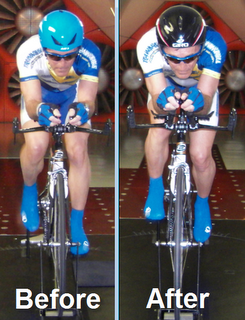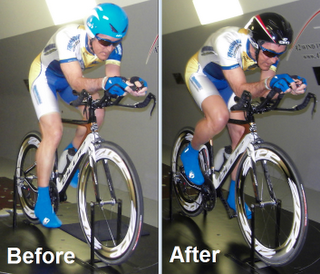I consider specificity the most important principle of training. And I tie specificity in with periodization to create training plans for the athletes I coach. So what is it? Basically, the specificity principle says that if you want to become good at something you need to do that thing. Sounds pretty simple, huh?
According to the specificity principle to ultimately become good at bicycle racing you should ride a bike – not run. That seems fairly obvious, but it’s remarkable how many cyclists, when short of time, will resort to a run workout. That may be ok early in the Base period. But in the Build period (3-11 weeks before the A race) there is very limited value.
So how about this one… If your goal is to run a 7-minute pace you need to do a lot of 7-minute-paced running. Not 8 minutes and not 6 minutes. There is this thing called “economy” which relates to the principle of specificity. If you spend a lot of time running 6- or 8-minute pace you will not be as economical at 7 minutes as you could have otherwise been. Economy has to do with how much energy you use (or waste) at a given pace.
One I deal with a lot has to do with triathletes and bike races… Many multisport athletes believe that bike road racing is good training for triathlon. It’s not. Bike races are, indeed, aerobic events, as are triathlons. But that’s where the similarity ends. The outcomes of bike races are determined by two-minute episodes when all hell breaks loose. They are anything but steady state aerobic. Bike racing has a huge anaerobic component which is critical to success. No one in their right mind races a triathlon that way. Triathlons are steady and anaerobic intensity is avoided. A bike race done by a triathlete is largely a wasted workout day. It’s even worse than that because the recovery after one of these delays when the next, truly specific triathlon workout can be done.
(A brief aside… I know many triathletes may be upset about what I just said. I’m sure I will get comments about pros who do this and how successful they are. But I think they’d be better if they stayed focused on triathlon. Some will comment on the “fun” factor of doing bike races. I have no problem with that. I used to do that myself and coach athletes who also participate in both sports. Everyone needs to decide what it is they want from sport. In other words, what is “fun” for you? You can be a generalist who is pretty good at a lot of different things, or you can be a specialist who is very good at one thing. I have no qualms about either. Either can be "fun." The purpose of this post, however, is to describe how to be very good at one sport. Now back to specificity.)
Here’s an even less obvious example… If training for a criterium you need to spend a lot of time in the drops or hooks of your handlebars – not on the brake hoods or tops. Why? Because crit racing demands you be in that position almost all of the race and pedaling economy is different when in the drops versus being on the hoods. Slightly different muscles are used.
You’re probably getting the idea now, but here’s a final one, similar to the above, that is often overlooked by road cyclists… If you want to race well in time trials you need to train on a TT bike. Again, different muscles are used in an extreme aero position than when on a road bike, even in the drops. In the Build period I have riders do muscular endurance intervals on their TT bike weekly.
This specificity principle is applied to periodization by ensuring that your weekly key workouts become increasingly like your next A race the closer in time you get to that race. So let’s examine “key” workouts.
A key workout is one that I have called a “breakthrough” workout in my Training Bible books. It’s a workout intended to push the limits of your fitness. I’ve recently started defining them with a “Training Stress Score” (TSS). I determine very early in the season what the approximate TSS of the A race will be. Then I design workouts based on that stress. I’ve mentioned this concept before here. But I continue to refine it and will post something here in the near future when time allows.
Essentially, a key workout is a hard session. Serious athletes typically do two to four of these in a week during the Build period. If you want to race faster, determining the details of these workouts, when to do them relative to each other, and the rate at which they become increasingly like the A race is what serious training is all about. Missing a key workout is bad but you can recover from it fairly easily. Missing a bunch of them is disastrous to performance.
The bottom line is that these key workouts must be specific to the demands of the A race for which you are training. Specificity isn’t so critical for the non-key workouts in your week. But some is still required. How much is difficult to say. But I’d recommend that a cyclist do them on a bike. That’s probably beneficial, but hard to measure.
It’s a little trickier for triathletes. They probably need to do each of the three sports at least three times a week. That means three key workouts and six “others” every week. Very competitive triathletes do far more than that. In fact, some would probably progress better if they cut back on some of the “filler” workouts.
You can make some exceptions to the specificity principle when it comes to recovery workouts. Triathletes are probably better off recovering on a bike or in the pool rather than by doing an easy run. If you’re going to develop an overuse injury it’s most likely in running. Saving the legs for the key runs is generally a good idea. I still want the triathletes I coach to run at least three times a week. So one of those “other” runs may be to improve skills or as a short run after a key bike ride to prepare the body for the “unusual” stress of running after riding.
At this point I should also get into recovery days in greater detail. That’s a post for another day, however.
Labels: specificity, TSS



